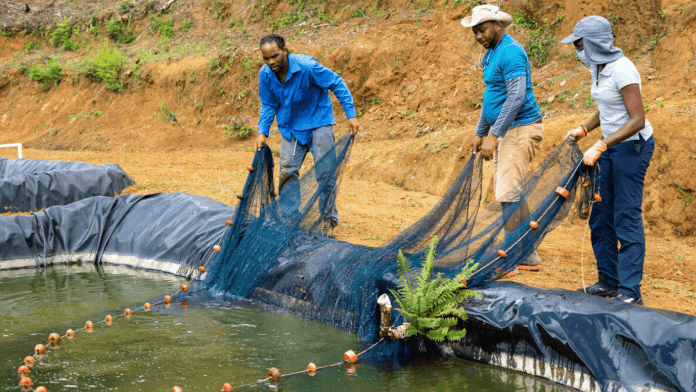News in Brief:
– For the first time, aquaculture production has surpassed capture fisheries, reaching 185 million tons in 2022.
– Aquaculture now accounts for 51% of aquatic animal production, offering a sustainable solution to global hunger.
The 2024 State of World Fisheries and Aquaculture (SOFIA) report marks a significant milestone: aquaculture has surpassed capture fisheries as the main source of aquatic animal products. This shift promises a new way to combat hunger without further harming our marine environment. Let’s delve into this historic achievement and its implications for farmers worldwide.
In 2022, aquaculture production hit a global record of 185 million tons, a 4% increase from 2020. Importantly, 51% of this production came from aquaculture, surpassing traditional capture fisheries for the first time. This is a crucial development because aquaculture can grow without putting additional strain on marine ecosystems, as less than 40% of aquaculture occurs in marine waters.
With 735 million people suffering from hunger, increasing food production is critical. Aquaculture offers an efficient solution. Unlike capture fisheries, which have remained stable for 30 years, aquaculture has grown by 5% annually since the early 2000s. This makes it a powerful tool for reducing hunger and poverty sustainably.
Leading countries in aquaculture
Asia dominates aquaculture production, with countries like China, Indonesia, India, Vietnam, Bangladesh, and the Philippines leading the way. Together, these nations account for 90% of global aquaculture output. In contrast, Africa contributes only 1.9%.
To boost aquaculture in low-income regions, especially in Africa, a comprehensive strategy is essential. This includes assessing legal frameworks, attracting private investment, building technical capacity, and developing infrastructure. Success stories like Zambia, which increased its fish production from 12,000 tons to 80,000 tons in a decade, demonstrate the effectiveness of this approach.
Changing consumer habits
Global consumption of aquatic foods has more than doubled since the 1960s, rising from 9 kg per person per year to 20.7 kg in 2022. This increase underscores the growing importance of aquatic foods in global nutrition, providing essential proteins and bioavailable micronutrients.
Adopting sustainable practices in aquaculture is vital for maintaining a secure food supply. This involves reducing environmental impacts and ensuring the long-term viability of aquatic food systems. Sustainable aquaculture practices can help meet the rising demand for nutritious food while preserving natural resources.



